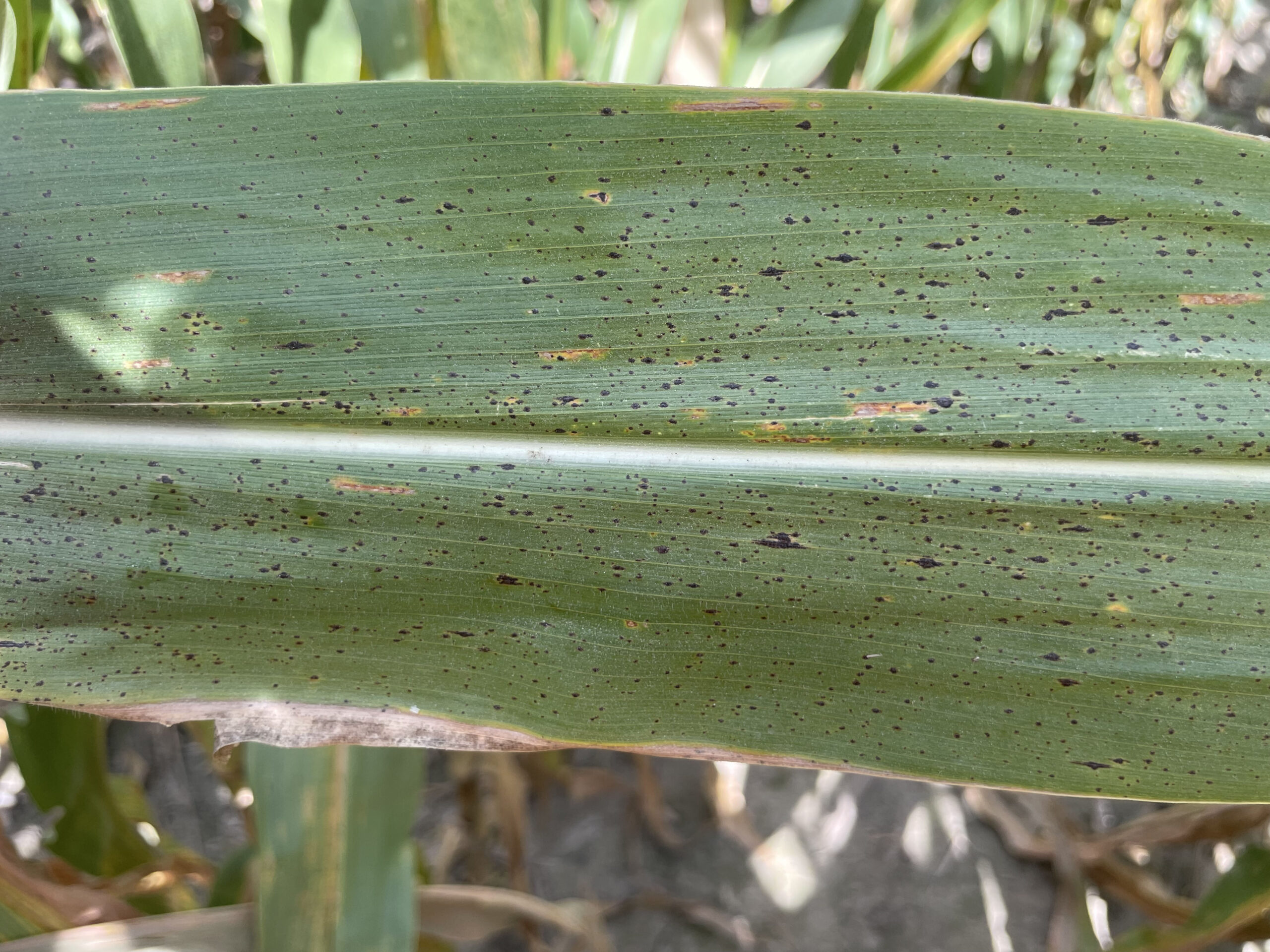Tar spot of corn confirmed in June in Missouri – the earliest ever

COLUMBIA, Mo. — Tar spot of corn has been confirmed in two northern Missouri counties: Holt County in northwestern Missouri and Marion County in northeastern Missouri, as well as in six counties in central Iowa and one in northeastern Kansas.
This is the earliest tar spot has ever been found in the Missouri. The disease was present at a very low incidence and severity when it was found June 23. Tar spot was not confirmed in Missouri last year until the last week of August.
Now is the time for growers to scout for the disease and monitor their corn, said Mandy Bish, assistant research professor and state extension specialist in field crop pathology.
In a press release, Bish said, “We want to hold off on those fungicide applications a little longer. Treatments at VT through R3 have shown the most consistent results in research on tar spot management.”
When scouting, look for individual stroma or black lesions on leaf surfaces, she said.
“Stroma can be mistaken for insect frass (poop),” said Bish. “Sometimes brown circles or ‘fish eyes’ may surround the lesions. Initially, there will be very few lesions. We have a few previous articles with descriptions, and the Crop Protection Network has many resources on tar spot.”
Bish advises growers to think through some of the known factors that can increase risks of the disease progressing:
- Was tar spot previously confirmed in this field or neighboring fields? The pathogen can survive Missouri winters.
- Is this a corn-following-corn rotation? Corn is the only known host for tar spot.
- Which corn varieties are most vulnerable? (While that information may not be published, seed dealers might have insights.)
Submit suspected samples of tar spot to the MU Plant Diagnostic Clinic for confirmation and to help the clinic track progression of the disease. Learn about submitting samples and www.plantclinic.missouri.edu. Confirmed incidences will appear on the Corn ipmPIPE website at www.corn.ipmpipe.org.
The fungal pathogen that causes tar spot, Phyllachora maydis, prefers milder air temperatures. A recent study showed that extended periods of lower minimum air temperatures corresponded to increased risks of tar spot development. Average minimum air temperatures in northwestern and northeastern Missouri were lower in June 2023 compared to the previous few years. This is likely one contributor to early onset of the disease.
As of June 28, air temperatures in northwestern and northeastern Missouri are forecast to be warmer than normal over the next 6-10 days. The anticipated air temperatures, low incidences of disease, previous research results on application timing and drought conditions are all reasons to scout and monitor for tar spot but hold off on fungicide applications a little longer, Bish said.
If a person chooses to spray early, there are a couple things to consider: 1) associations between arrested ear development and applications of adjuvants to corn at the V12 to V14 growth stages; 2) a second application will likely be needed if the disease continues to spread.
If you are in northeastern or northwestern Missouri where the pathogen is known to be present, please consider using the free Tar Spotter App (ipcm.wisc.edu/apps/tarspotter) developed at the University of Wisconsin to help guide fungicide applications. This mobile app assumes the pathogen is present, and thus the app is not yet appropriate for counties in the state where it is uncertain if the pathogen is present, Bish said.
Specialists will discuss tar spot at the MU Pest Management Field Day on July 6 at Bradford Research Farm. Find details and registration at www.mizzou.us/PMFD2023.
Also, consider subscribing to the MU Crop and Pest Text Alert System (ipm.missouri.edu/cropPest/textAlert.cfm) to keep up to date on the latest information about tar spot.
Miss Clipping Out Stories to Save for Later?
Click the Purchase Story button below to order a print of this story. We will print it for you on matte photo paper to keep forever.

